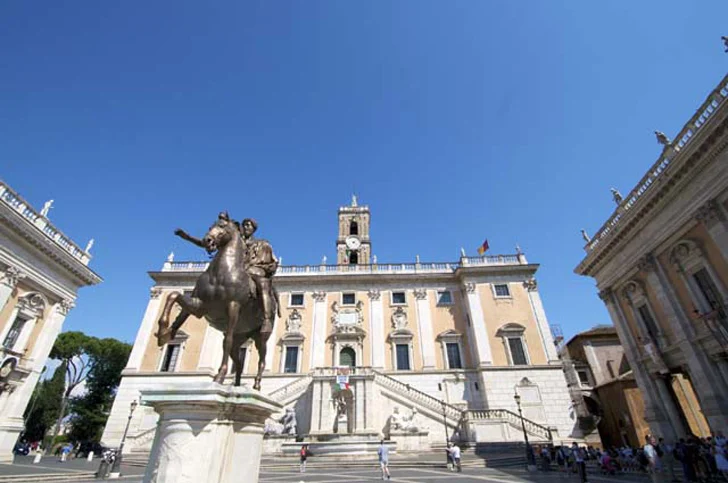
By Melanie Renzulli
Italy Travel Expert, about.com
[post_ads_2]
The Capitoline Museums in Rome, or Musei Capitolini, were established
by Pope Clement XII in 1734, making them the first museums in the world
open to the public. Actually one museum spread out in two buildings –
the Palazzo dei Conservatori and the Palazzo Nuovo – the Capitoline
houses numerous artistic and archaeological treasures that help to tell
the story of Rome.
Palazzo dei Conservatori
The Palazzo dei Conservatori
is the largest building of the Capitoline and it is broken down into
several sections, including the Conservators’ Apartments, the courtyard,
the Palazzo dei Conservatori Museum, and other halls. There’s also a café and a bookshop located in this wing of the Capitoline.
[post_ads_2]
The Palazzo dei Conservatori contains several famous artworks from antiquity. Primary among them is the She-Wolf bronze (La Lupa), which dates from the fifth century BC, and is the de facto symbol of Rome. It depicts Romulus and Remus, the ancient founders of Rome, suckling a she-wolf.
Other well-known works from ancient times are Il Spinario,
a first century BC marble of a boy removing a thorn from his foot; the
original equestrian statue of Marcus Aurelius (a copy of this is located
in the center of Piazza del Campidoglio); and fragments from a colossal
statue of Emperor Constantine.
Rome’s legends and triumphs are also exhibited in the frescoes, tapestries, statues, coins, pottery, and ancient jewelry of the Palazzo dei Conservatori.
Here you will find portrayals of the Punic Wars, inscriptions of Roman
magistrates, the foundations of an ancient temple dedicated to the God
Jupiter, and a stunning collection of statues of athletes, gods and
goddesses, warriors, and emperors ranging from the days of the Roman
Empire to the Baroque period.
In addition to the many
archaeological finds there are also paintings and sculptures from
medieval, Renaissance, and Baroque artists. The third floor has a
picture gallery with works by Caravaggio and Veronese, among others.
There is also a very famous bust of the head of Medusa sculpted by
Bernini.
Galleria Lapidaria and Tabularium
In an underground passageway that leads from the Palazzo dei Conservatori to the Palazzo Nuovo
is a special gallery that opens up onto views of the Roman Forum. The
Galleria Lapidaria contains epigraphs and the foundations of two ancient
Roman homes. This is also where you will find the Tabularium,
which contains additional foundations and fragments from ancient Rome.
Passing through the Galleria Lapidaria and the Tabularium is a superb
way to gain a better understanding of ancient Rome and get a unique view
of the Roman Forum.
Palazzo Nuovo
While the Palazzo Nuovo
is the smaller of the two museums of the Capitoline, it is no less
spectacular. Despite its name, the “new palace ” also includes numerous
objects from antiquity, including a large lounging statue of a water god
called “Marforio”; ornate sarcophagi; the statue of Discobolus; and mosaics and statues recovered from Hadrian’s villa in Tivoli.
Capitoline Museums Visiting Information
Location: Piazza del Campidoglio, 1, on the Capitoline Hill
Hours: Tuesdays-Sundays,
9:30 am until 7:30 pm (last entrance 6:30 pm), closes at 2:00 pm on
December 24 and 31. Closed Mondays and January 1, May 1, December 25.
Information: Check the web site for updated hours, prices, and special events. Tel. (0039) 060608
Admission: €11.50 (as of 2016). Reductions for under 18 or over 65.
Save on admission with the Roma Pass.
Save on admission with the Roma Pass.
For more Rome museum ideas, see our list of Top Museums in Rome.
This article has been edited by Martha Bakerjian.
























